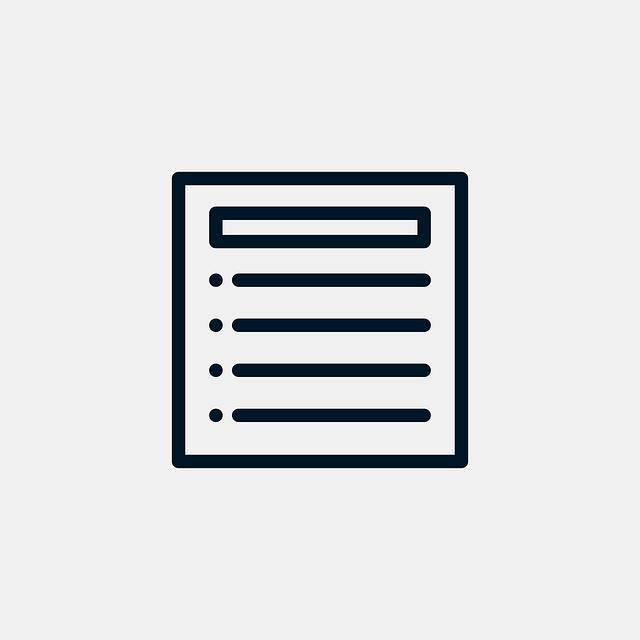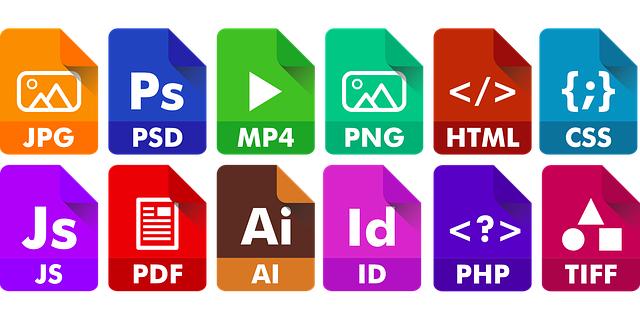Football Ice Bath: Chilled Recovery for Athletes

Football Ice Bath: Chilled Recovery for Athletes
Did you know that some of the world’s top footballers are turning to a chilling post-match secret to enhance their recovery? Ice baths have become the go-to method for athletes seeking quick and effective rejuvenation. With benefits ranging from reducing inflammation to relieving muscle soreness, it’s no wonder these frosty soak sessions have become a game-changer in the football world. In this article, we delve into the science, benefits, and best practices of football ice baths, uncovering why they have become a must-have tool in every athlete’s recovery arsenal. So, lace up your boots and get ready to dive into the icy depths of athletic recovery like never before.
Contents
- 1. The Science Behind Football Ice Baths: Understanding the Benefits of Chilled Recovery
- 2. Maximizing Performance: How Football Ice Baths Aid in Athletes’ Physical Recovery
- 3. Soothing Sore Muscles: The Therapeutic Effect of Football Ice Baths on Athlete’s Bodies
- 4. A Cool Solution: The Role of Ice Baths in Reducing Inflammation and Swelling
- 5. Post-Game Rituals: Incorporating Football Ice Baths into an Athlete’s Recovery Routine
- 6. Unlocking Potential: How Cold Therapy in Ice Baths Can Enhance Athletic Performance
- 7. Step-by-Step Guide: The Proper Techniques for Safely Submerging in Football Ice Baths
- 8. Ice Bath Alternatives: Exploring Other Cold Recovery Methods for Football Athletes
- 9. Essential Tips: Preparing the Perfect Ice Bath for Optimal Muscle Recovery
- 10. Staying Mentally Sharp: The Psychological Benefits of Football Ice Baths for Athletes
- Football Ice Bath: Chilled Recovery for Athletes
1. The Science Behind Football Ice Baths: Understanding the Benefits of Chilled Recovery
Chilled recovery has become a popular practice among football athletes, and for good reason. The science behind football ice baths reveals a multitude of benefits that can aid in an athlete’s recovery process. Whether it’s after an intense training session or a demanding match, immersing oneself in an ice bath can provide much-needed relief and several physiological advantages that can positively impact performance on the field.
One of the primary benefits of football ice baths is reducing inflammation and muscle soreness. The cold temperature helps to constrict blood vessels, decreasing blood flow to the affected areas. This reduction in blood flow slows down the inflammation process and minimizes swelling, which in turn alleviates muscle soreness. Additionally, the cold water numbs nerve endings, providing a soothing sensation and calming any pain or discomfort experienced during intense physical activity.
Another advantage of chilled recovery is the facilitation of metabolic waste removal. As the body engages in strenuous exercise, waste products like lactic acid can accumulate in the muscles, leading to fatigue and decreased performance. The cold water in an ice bath acts as a natural vasoconstrictor, causing blood vessels to narrow. This constriction propels the waste products away from the muscles and towards the central circulatory system, where they can be efficiently eliminated from the body.
Maintaining body temperature during a football game or training session is crucial, and ice baths can help with this too. Immersion in cold water stimulates the body’s thermoregulatory response, causing blood vessels near the skin’s surface to constrict. This constriction helps to prevent heat loss and conserve body temperature, enabling athletes to recover and cool down effectively.
In summary, the science behind football ice baths provides insights into the numerous benefits they offer athletes. From reducing inflammation and muscle soreness to aiding in the removal of metabolic waste, chilled recovery is an indispensable tool for enhancing performance on the field. Incorporating regular ice baths into a training regimen can be a game-changer for football players seeking optimal recovery and improved overall well-being.
2. Maximizing Performance: How Football Ice Baths Aid in Athletes’ Physical Recovery
Ice baths have become a popular recovery method among football players, and for good reason. This chilling treatment can have a significant impact on an athlete’s physical recovery, allowing them to push their performance to the limits. Here’s how football ice baths can aid in optimizing athletes’ recovery:
-
Increased blood circulation: Immersing the body in ice-cold water causes the blood vessels to constrict and then expand rapidly, promoting efficient blood flow. This process, known as vasoconstriction and vasodilation, helps flush out waste products and toxins from the muscles, reducing inflammation and swelling. As a result, the body recovers faster, allowing athletes to bounce back from intense training sessions or matches more quickly.
-
Reduced muscle soreness: After a grueling football game, players often experience muscle soreness and stiffness. However, plunging into an ice bath post-workout can alleviate these discomforts. The cold temperature helps numb the nerve endings, leading to reduced pain and a soothing effect on the muscles. Additionally, the cold water acts as a natural anti-inflammatory agent, minimizing muscle damage and promoting faster recovery.
- Enhanced muscle repair: Ice baths can also contribute to the repair and regeneration of muscles. The cold temperature stimulates the body’s production of growth factors, such as insulin-like growth factor 1 (IGF-1), which aids in rebuilding damaged muscle tissues. This promotes muscle growth and strength development, ensuring athletes are ready to give their all in the next game or training session.
Overall, football ice baths offer a refreshing and effective method for athletes to optimize their physical recovery. By incorporating this cooling therapy into their post-workout routine, players can experience improved blood circulation, reduced muscle soreness, and enhanced muscle repair. So, embrace the chill and take advantage of the benefits that ice baths bring to the table – or rather, the tub!
3. Soothing Sore Muscles: The Therapeutic Effect of Football Ice Baths on Athlete’s Bodies
Football ice baths have become an essential part of athletes’ recovery routines, providing much-needed relief for sore muscles. These therapeutic ice baths are known for their ability to speed up recovery, reduce inflammation, and soothe tired bodies.
The secret behind the effectiveness of football ice baths lies in the power of low temperatures. When athletes immerse themselves in ice-cold water, it leads to vasoconstriction, which helps in reducing swelling and flushing out waste products from the muscles. This process promotes faster healing and aids in the overall recovery of athletes.
Furthermore, football ice baths help in reducing exercise-induced muscle damage (EIMD) caused by intense physical activity. The cold temperature constricts blood vessels, limiting the amount of fluid and inflammation that accumulates in the muscles during exercise. As a result, athletes experience less muscle soreness and are able to bounce back more quickly.
To enhance the recovery process even further, some athletes opt for contrast therapy – alternating between cold and hot baths. The combination of cold and heat helps to increase circulation and flush out lactic acid, promoting faster recovery. It’s important to note that ice baths should be used as a supplement to other recovery strategies, such as proper nutrition, rest, and stretching.
In conclusion, football ice baths are a valuable tool for athletes to recover and prevent muscle soreness. By incorporating these chilled recovery sessions into their routine, athletes can harness the therapeutic benefits of low temperatures to enhance their performance and minimize the risk of injury. So, if you’re looking for an effective way to soothe sore muscles and expedite recovery, consider adding football ice baths to your post-game or post-training regimen. Your body will thank you!
4. A Cool Solution: The Role of Ice Baths in Reducing Inflammation and Swelling
Ice baths have become a popular method for athletes to recover after intense physical activity, particularly in the world of football. The cold temperatures of the ice water help reduce inflammation and swelling in the body, providing a refreshing and effective solution for athletes.
One of the main benefits of ice baths is their ability to constrict blood vessels, which helps decrease the flow of blood to the muscles. This reduction in blood flow can lead to a decrease in inflammation and swelling, allowing athletes to recover faster and get back to training sooner. Additionally, ice baths can help numb any pain or soreness in the muscles, providing immediate relief.
To maximize the benefits of ice baths, it is important to follow a proper protocol. Athletes typically spend around 10-15 minutes in an ice bath, ensuring that their body is submerged up to their hips. For football players, focusing on lower body recovery is essential, as the legs and lower extremities are most commonly affected by intense physical activity.
During an ice bath, it is recommended to perform gentle movements, such as small leg lifts or rotations, to promote blood circulation without straining the muscles. After the ice bath, athletes should slowly warm up their bodies to avoid shocking their system. This can be done through light stretching exercises or a warm shower.
In conclusion, ice baths have proven to be a cool solution for reducing inflammation and swelling in athletes. Its ability to constrict blood vessels and provide immediate relief to sore muscles make it an effective recovery method, particularly in the world of football. By following a proper ice bath protocol, athletes can enhance their recovery process and get back to the game feeling refreshed and rejuvenated.
5. Post-Game Rituals: Incorporating Football Ice Baths into an Athlete’s Recovery Routine
Football ice baths have become a staple in many athletes’ post-game recovery routines. The intense physical demands of football can often leave players sore, fatigued, and at risk of injury. That’s where ice baths come in, offering a refreshing and effective way to enhance recovery and minimize post-game soreness.
But how exactly do ice baths work? When submerged in ice-cold water, the blood vessels constrict, flushing out metabolic waste products accumulated during intense physical activity. As a result, fresh oxygenated blood rushes back to the muscles, reducing inflammation and speeding up the healing process. This helps athletes recover faster and be ready for subsequent games and training sessions.
Incorporating football ice baths into an athlete’s recovery routine can provide a multitude of benefits. Not only do they reduce muscle soreness and inflammation, but they also promote active recovery. Athletes can further enhance the effectiveness of ice baths by incorporating stretching exercises or contrast baths, alternating between ice-cold water and warmer water. Additionally, ice baths can boost mental resilience, as athletes tough it out in freezing temperatures, developing discipline and mental toughness.
To make the most out of football ice baths, it’s crucial to adhere to the following best practices:
-
Timing: Take an ice bath within 30 minutes to two hours after the game to optimize the recovery benefits.
-
Duration: Aim for 10-15 minutes in the ice bath, ensuring that the water temperature is maintained between 50 to 59 degrees Fahrenheit.
-
Hydration: Replenish lost fluids by hydrating before and after the ice bath to prevent dehydration.
-
Active Recovery: While in the ice bath, perform gentle exercises like ankle pumps or arm movements to enhance blood flow.
- Gradual Adaptation: Start with shorter durations and gradually increase the time spent in the ice bath as your body adapts to the cold.
By incorporating football ice baths into their recovery routines, athletes can leverage this powerful tool to reduce soreness, promote efficient healing, and enhance their overall performance. So, why not give it a try? Your body will thank you for it. Stay chilled and recover like a champion!
6. Unlocking Potential: How Cold Therapy in Ice Baths Can Enhance Athletic Performance
Ice baths have long been used as a recovery technique by athletes, particularly those in the world of football. This chillingly effective therapy involves immersing oneself in ice-cold water after intense physical activity, with the aim of reducing muscle soreness, speeding up recovery, and enhancing athletic performance. So, how does this popular practice work, and what benefits does it offer?
Cold therapy, such as ice baths, acts as a form of cryotherapy, which helps to reduce inflammation in the body. When exposed to extreme cold, blood vessels constrict and then dilate upon rewarming, promoting improved blood flow. This increase in circulation helps to flush away metabolic waste and deliver fresh oxygen and nutrients to tired muscles, reducing inflammation and speeding up the healing process.
In addition to reducing muscle soreness and inflammation, ice baths can also have a positive impact on overall performance. By regularly incorporating this recovery technique into their routine, athletes can potentially enhance their physical capabilities. Cold therapy helps to increase pain tolerance, improve muscle activation, and even boost psychological recovery, making it an essential tool for athletes striving to unlock their full potential. So, next time you see football players taking the plunge into an ice bath, remember that they are not just enduring the cold — they are giving their bodies the opportunity to recover and perform at their best.
7. Step-by-Step Guide: The Proper Techniques for Safely Submerging in Football Ice Baths
Football Ice Bath: Chilled Recovery for Athletes
So, you’ve heard about the benefits of ice baths for athletes, and you’re ready to give it a try. Step-by-step, we’ll guide you through the proper techniques to safely submerge in football ice baths. Follow these instructions to ensure you make the most of this chilled recovery method.
-
Preparation:
Before diving into the icy cold water, it’s important to prepare yourself and gather the necessary supplies. Here’s what you’ll need:- A large tub or ice bath container filled with cold water (around 50-59°F or 10-15°C).
- Ice cubes or bags of ice to lower the water temperature.
- A thermometer to monitor the water temperature.
- A timer or stopwatch to track your time.
-
Gradual Submersion:
Start by gently dipping your toes into the icy water. Slowly and steadily, gradually submerge your legs, knees, and then thighs. Take your time to allow your body to adjust to the temperature changes. Avoid sudden movements or immersing your entire body all at once, as this can cause shock or discomfort. - Duration and Techniques:
For optimal recovery, aim to stay in the ice bath for 10-15 minutes. While submerged, there are a few techniques you can use to enhance the experience:- Deep breathing: Take slow, deep breaths to help relax your muscles and reduce any initial discomfort.
- Gentle movement: Flex and extend your legs or arms to promote blood circulation.
- Visualization: Imagine yourself recovering and rejuvenating with each moment spent in the ice bath.
Remember, it’s essential to monitor your comfort level throughout the process. If you feel any extreme discomfort or numbness, slowly and safely exit the ice bath. Always listen to your body and consult with a healthcare professional if you have any concerns or medical conditions that may impact your ability to safely participate in ice baths.
Stay chilled and recover like a pro with these step-by-step techniques for safely submerging in football ice baths. Incorporating this practice into your post-training routine can help alleviate muscle soreness, reduce inflammation, and enhance overall recovery. Give it a try and reap the benefits of this invigorating cold therapy.
8. Ice Bath Alternatives: Exploring Other Cold Recovery Methods for Football Athletes
In the world of football, recovery is incredibly important for athletes to maintain peak performance levels. Traditionally, ice baths have been a popular method for promoting recovery after intense training or games. However, there are various ice bath alternatives that can also provide effective cold therapy for football athletes. These alternatives offer unique benefits and can be a refreshing change from the traditional ice bath routine.
One alternative to ice baths is cryotherapy. Cryotherapy involves exposing the body to extremely cold temperatures for a short duration, typically in a specialized chamber or sauna. This method can help reduce inflammation, promote muscle recovery, and even enhance athletic performance. With cryotherapy, football athletes can get the benefits of cold therapy in a more controlled and targeted manner.
Another alternative to ice baths is cold compression therapy. This method combines targeted cold therapy with compression, providing both cooling and compression benefits to the affected areas. Cold compression therapy can help reduce swelling, alleviate pain, and promote healing of muscle and joint injuries. By using specially designed devices, football athletes can easily apply cold compression to specific areas of the body, allowing for more efficient and convenient recovery.
In addition to these alternatives, football athletes can also explore other cold recovery methods such as cold showers, ice massage, and cold packs. Each method offers its own unique benefits and can be customized to meet individual recovery needs. It’s important for athletes to experiment with different cold therapy techniques to find what works best for their bodies and recovery goals. So, don’t be afraid to explore these ice bath alternatives and discover new ways to achieve chilled recovery.
9. Essential Tips: Preparing the Perfect Ice Bath for Optimal Muscle Recovery
When it comes to post-workout recovery, ice baths have become an essential tool for athletes, especially football players. Plunging into icy water might sound intimidating, but the benefits it provides for muscle recovery and inflammation reduction are well worth it. Here are some essential tips to help you prepare the perfect ice bath for optimal muscle recovery:
- Temperature: The ideal water temperature for an ice bath ranges from 50 to 59 degrees Fahrenheit (10 to 15 degrees Celsius). This temperature range is cold enough to elicit the desired physiological responses but not overly painful or dangerous.
- Ice Quantity: Achieving the perfect ice bath requires a substantial amount of ice. Aim for around 20 pounds (9 kilograms) of ice per 10 gallons (38 liters) of water to ensure a cold and refreshing experience.
- Duration: The recommended duration for an ice bath session is between 10 to 15 minutes. Longer durations might not provide additional benefits and could be detrimental to your recovery.
- Preparation: Before stepping into the ice bath, it’s essential to warm up your body beforehand. Engage in light cardiovascular exercises or active stretching to increase blood circulation.
- Aftercare: Once you’ve completed your ice bath, focus on warming up gradually. Use warm towels, a hot shower, or a heat pack to gently raise your body temperature back to normal. It’s also crucial to stay hydrated and replenish your body with electrolytes after an intense workout.
Remember, the goal of an ice bath is to aid in muscle recovery, reduce inflammation, and promote overall healing. By following these essential tips, you can maximize the benefits of your ice bath and ensure optimal performance for your next game or training session. Stay cool and recover like a pro!
10. Staying Mentally Sharp: The Psychological Benefits of Football Ice Baths for Athletes
Football Ice Bath: Chilled Recovery for Athletes
As football players, athletes are no strangers to the physical demands and toll their bodies endure on the field. While proper training and nutrition play vital roles in maintaining physical fitness, the psychological benefits of football ice baths cannot be overlooked. The thought of immersing oneself in icy water may seem daunting, but the rewards are immense for athletes looking to stay mentally sharp and enhance their overall performance.
One of the significant psychological benefits of football ice baths is their ability to reduce muscle soreness and inflammation. Cold water immersion has been proven to decrease the production of pro-inflammatory markers and aid in the removal of metabolic waste from muscles. By accelerating the recovery process, athletes experience less pain and discomfort, allowing them to focus more on their mental preparation and approach to the game.
In addition to reducing physical discomfort, ice baths also serve as a mental reset for athletes. The intense cold triggers a physiological response, releasing endorphins and increasing alertness and cognitive function. The refreshing shock to the system acts as a wake-up call, boosting mental clarity, and sharpening the athlete’s focus. By incorporating ice baths into their post-match or post-training routine, football players can enhance their mental resilience and stay sharp throughout the season.
In conclusion, the football ice bath is a game-changer when it comes to athlete recovery. Whether you’re a professional football player or just enjoy a spirited game with friends on the weekends, incorporating an ice bath into your post-game routine can greatly enhance your performance and prevent injuries. By reducing inflammation, relieving muscle soreness, and promoting a faster recovery, this chilled therapy is bound to leave you feeling refreshed and ready for your next match. So, why not take the plunge and dive into the world of football ice baths? Your body will thank you, and your opponents won’t know what hit them. Stay cool, stay fit, and keep winning on and off the field!














